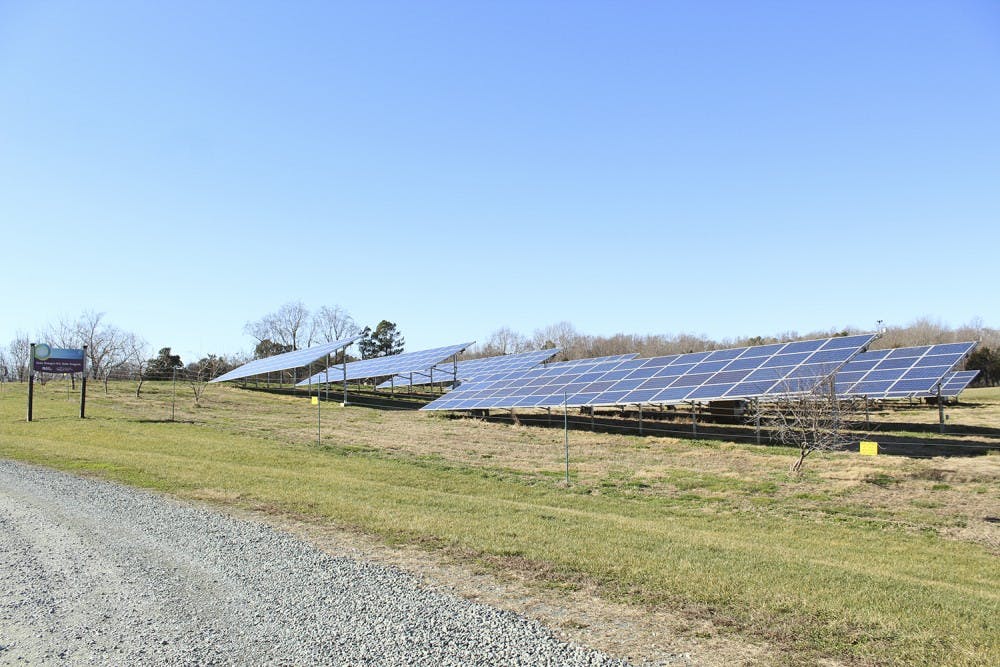CORRECTION: An earlier version of this article identified the Three Zeros Environmental Initiative as the Three Zeroes Initiative and incorrectly stated that the University is making strides in becoming gas neutral by developing a battery-operated solar farm. The University is striving to be greenhouse gas neutral by developing a solar and battery storage project. The article incorrectly stated that the batteries in the solar panels will store power when that power is being used by buildings. The batteries will charge when the power from the solar panels is not being used by buildings. The article also incorrectly stated that the solar farm will occupy a large portion of the land and that Campus Enterprises brainstormed ideas with the Town for future buildings. It will occupy a small portion of the land and the property is governed by a development agreement with the Town, but there are no near-term plans for development there. The story has been updated with the correct spelling of the initiative and for clarification on the development and operations of the solar farm. The Daily Tar Heel apologizes for these errors.
As part of UNC-Chapel Hill's Three Zeros Environmental Initiative, the University is making strides in becoming green house gas neutral by developing a new solar and battery storage project where the Horace Williams Airport was once located.
“The project will power buildings that the University has in the area of the former airport," said Brad Ives, the associate vice chancellor for Campus Enterprise and the University's chief sustainability officer. "Our power load there is about 1.5 megawatts, so the solar farm will provide about one-third of the power used by those buildings on a typical day.”
Using the solar farm will reduce the University’s energy purchases. The batteries in the solar panels can store half a megawatt-hour of energy as a reserved resource. The batteries will store power from the solar panels when that power is not being used by buildings. At night, the batteries will continue to charge with power coming from Duke Energy’s power grid.
The solar farm will also improve the University's environmental footprint by reducing the number of greenhouse gases emitted.
"Most likely we are looking at solar power offsite," Ives said regarding the University's plans to bring more solar-powered energy to the campus. "If we were to install some panels on the roof of buildings, we would produce slightly less than one percent of power."
The solar farm will occupy a small portion of the land where the Horace Williams Airport once stood, but there are currently no definite plans for the rest of the land.
Dana Haine, K-12 science education manager for the Environmental Resource Program, plans to develop a curriculum about solar power for a wide range of students to use.
"I envision environmental studies students maybe learning about solar and storage technologies in their class," Haine said. "I can envision environmental finance students calculating the payback period on this project based on data being generated from the site. I can see chemistry students comparing different types of battery technology, the pros and cons of each."



